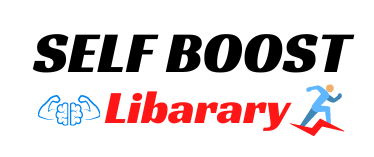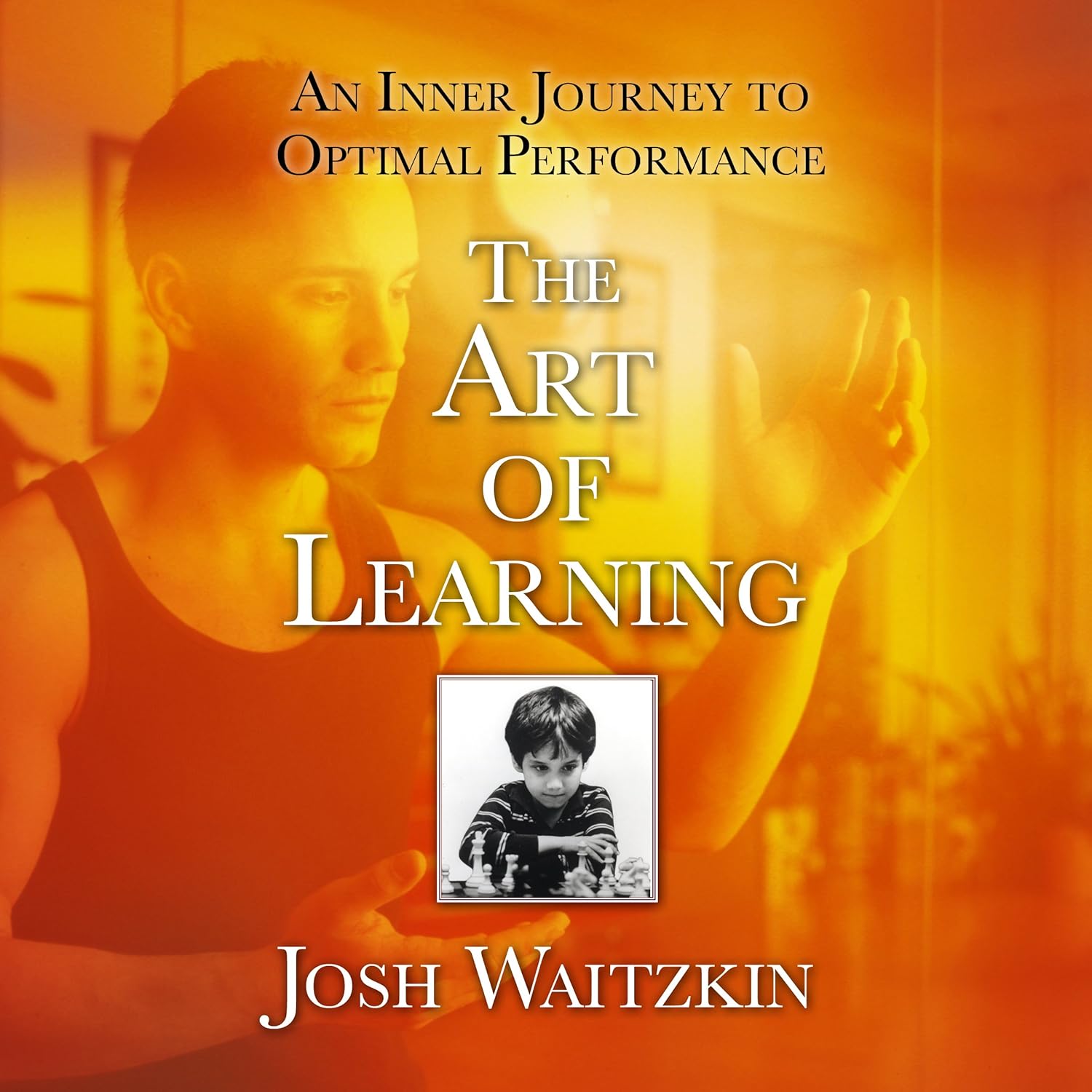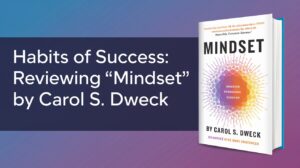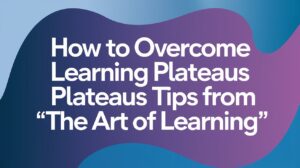Learning any new skill or mastering one that is already familiar can be quite an exciting and filled-with-discovery process-very irksome at times. Probably the most standard barrier that every other person goes through in this journey is what has been termed the “learning plateau.” In brief, what happens during a plateau is that progress in learning, despite regular effort and practice, comes to a stop. You feel as though you are stuck in a rut and cannot break through to the next level of proficiency. This naturally can be depressing and may even dampen the spirits of any individual who is working on coming out on top. Plateaus, however, aren’t roadblocks but a natural part of learning that can be easily overcome with the right strategies in place.
In his book, The Art of Learning: An Inner Journey to Optimal Performance, Joshua Waitzkin offers some fascinating insights into how we might approach these learning plateaus and break through. From chess prodigy to martial arts champion, Waitzkin recounts how he mastered various fields by sharing principles in the way of overcoming plateaus and continuing to grow.
This article will explore the key takeaways of The Art of Learning, practical strategies to integrate into your personal and professional life, and how to break through learning plateaus to actualize your potential.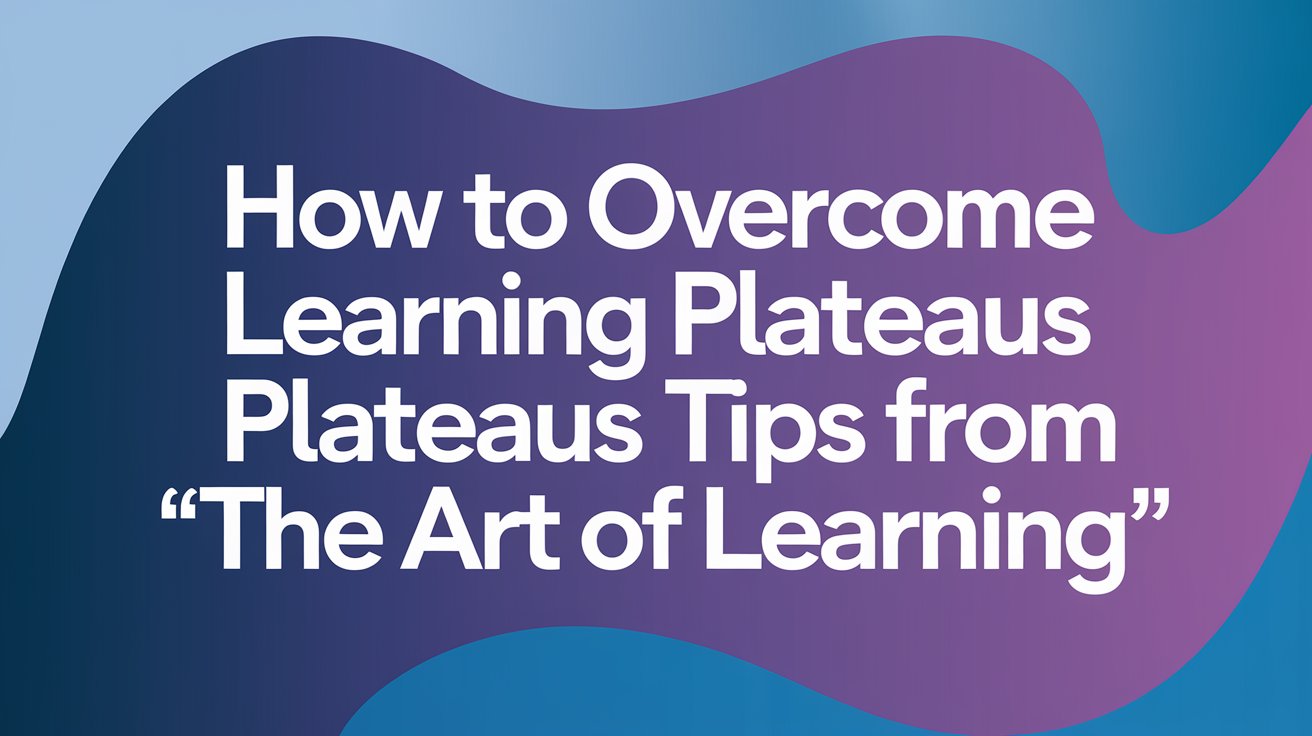
Overview of The Art of Learning
The Art of Learning is not a memoir of Joshua Waitzkin’s life in chess and Tai Chi Chuan; it is an in-depth, philosophical exploration into the process of learning itself. Waitzkin condenses his experiences into practical insights on how to maximize learning efficiency and achieve mastery in any discipline.
The book is divided into two main parts:
The Foundation-where Waitzkin talks about his early years in chess and how he developed his unique approach to learning.
My Second Art, in which he relates his coming into martial arts, particularly Tai Chi Chuan, and how he applied the principles of learning he had developed in chess to excel in a completely new field.
The Art of Learning touches on various subjects, from embracing failure to cultivating resilience and the subtleties of intuitive thinking. The approach is deeply personal, yet it is in that aspect that the universality of this book speaks to readers of all walks of life.
Key Lessons from The Art of Learning
Waitzkin voices a number of important lessons throughout the book; many of these are directed at surmounting the inevitable plateaus that take place in any learning curve. Some of the most impactful follow:
1. Embrace the Fundamentals
Waitzkin emphasizes one needs to be masterly in control with the fundamentals of the subject at hand before moving to more sophisticated practice. All too often, in most learning, one rushes to do high-order techniques before one has become comfortable and competent with the essentials. In chess, he had spent years bringing basic opening principles into play with a facility that later would allow him to work with more complex positions in games. In Tai Chi, it was his mastering fundamental movements that finally won him competitive success.
Key Insight: Mastery is based on a good foundation. Sometimes when we find ourselves at a plateau, it is time to review and perfect the basics. It’s amazing how often a return to the fundamentals of a subject can reveal new insights and unlock the progress that seemed blocked.
2. Make Small, Incremental Changes
One of the more useful takeaways from The Art of Learning is that of incremental growth. Waitzkin refers to this as “the art of pushing yourself, but not too much.” Instead of focusing on huge leaps in progress, he talks about making small, daily improvements. These small, consistent gains add up over time, leading eventually to significant progress.
To me, this means it is about setting achievable goals for personal life and embracing these small-scale victories en route to the ultimate goal. It is very easy to be frustrated when progress is not immediate. But in acknowledging incremental success, that can keep motivation high.
Best Line from the Book: “Growth comes at the point of resistance. We learn by pushing ourselves and finding what really lies at the outer reaches of our abilities.”
3. Convert Adversity to Strength
A deeply buried concept throughout The Art of Learning is that obstacles are opportunities. In both chess and the martial arts, Waitzkin suffered through defeats, injuries, and moments of paralyzing self-doubt. Rather than looking at these as some sort of impediment, he chose to redefine them as opportunities. Each failure became a lesson, another step toward greater understanding and mastery.
When you are facing a learning plateau, it is time to change your thinking in regard to this situation instead of you telling yourself that you are at a ‘standstill’; ask yourself one thing: What can I learn from this? How is this moment going to make me stronger?
4. Develop a Growth Mindset
Waitzkin teaches the “growth mindset” so famously inspired by psychologist Carol Dweck. In The Art of Learning, Waitzkin talks about looking at challenges as opportunities for growth and not signs of inadequacy. This mindset encourages resilience through which learners can push through the plateaus onto the path of mastery.
A growth mindset will help learners to not become discouraged, believe in the process of learning, and find that effort and persistence are much more important than talent.
5. Develop your intuition
Another major concept in The Art of Learning is the power of intuition. In chess, he could “feel” at one point the right move without even looking at the board consciously. Deep, almost unconscious insight was developed from years of devoted practice and being immersed in the craft. This intuition came into good use during martial arts while he reacted to very stressful situations.
As Waitzkin would have it, in developing intuition, one should first concentrates on one aspect of his practice until such time that this becomes instinctive, then more intuitive insights will follow naturally in time.
Josh Waitzkin knows what it means to be at the top of his game. A public figure since winning his first National Chess Championship at the age of nine, Waitzkin was catapulted into a media whirlwind as a teenager when his father's book Searching for Bobby Fischer was made into a major motion picture. After dominating the scholastic chess world for ten years, Waitzkin expanded his horizons, taking on the martial art Tai Chi Chuan and ultimately earning the title of World Champion. How was he able to reach the pinnacle of two disciplines that on the surface seem so different? "I've come to realize that what I am best at is not Tai Chi, and it is not chess," he says. "What I am best at is the art of learning."
How Does One Apply These Lessons in Personal Life?
The insights from The Art of Learning are not only applicable to chess and martial arts but can well be utilized to overcome any learning plateau in any field-be that playing a musical instrument, developing any new skill at work, or learning a language. Here’s how you might apply these principles in your personal life:
1. Revisit the Fundamentals
Whenever you think you aren’t learning well, go back and relearn the basics. Whether that’s playing simple scales on the piano or going back to basic grammar in a foreign language, whenever one is stuck, getting back to the roots can help you get through your learning plateau.
2. Set Small, Achievable Goals
Instead of these huge milestones, set small achievable goals- those things you can do on an everyday basis. If you are trying to learn how to code, for instance, make a goal to learn one new function each day. Celebrate those little wins; they will keep you motivated and track your progress even when it appears slow.
3. Allow for Failure and Setbacks
Instead of fearing failure, embrace it as a natural progression in learning. Every mistake results in invaluable feedback and one more notch in the bedpost of personal growth. The very plateau is a teaching moment-it’s your own mini-crises signaling that you’re standing on the cusp of what you’re presently capable of, and the only way through is embracing discomfort and forging onward.
4. Be the owner of a growth mindset
Keep telling yourself that ability is not something fixed; rather, it is something to be developed through practice. This is key in regard to getting through plateaus and staying focused on the long process rather than frustrations in the short term. Always make sure to challenge yourself, and where you fail, see this not as a defeat but rather as an opportunity to learn something new.
5. Practice Focused
ell, that is intuition, which waits for deep and focused practice. Set a block of time without any sort of distractions to focus on one particular aspect of your craft. Such deliberate practice embeds learning at deeper and intuitive levels beyond which one can apply in life’s situations.
Conclusion: Learning is an Art of Life-long Process
It is not just about breaking through plateaus and learning breakthroughs; it’s more about developing a kind of thinking that embraces constant self-improvement and the overcoming of obstacles. Joshua Waitzkin’s The Art of Learning offers powerful strategies for continuing to grow even when improvement seems slow.
It follows that embracing the fundamentals, focusing on small improvements, turning adversity into strength, and maintaining a growth mindset provide us with the wherewithal to surmount plateaus in any discipline. Learning is not linear, and plateaus form just one part of the journey to mastery.
This is perhaps best summed up with the line: “Growth comes at the point of resistance.” When you think you can’t anymore, you’re close to a breakthrough. Just keep pushing and learning, and you eventually will be moving again.
